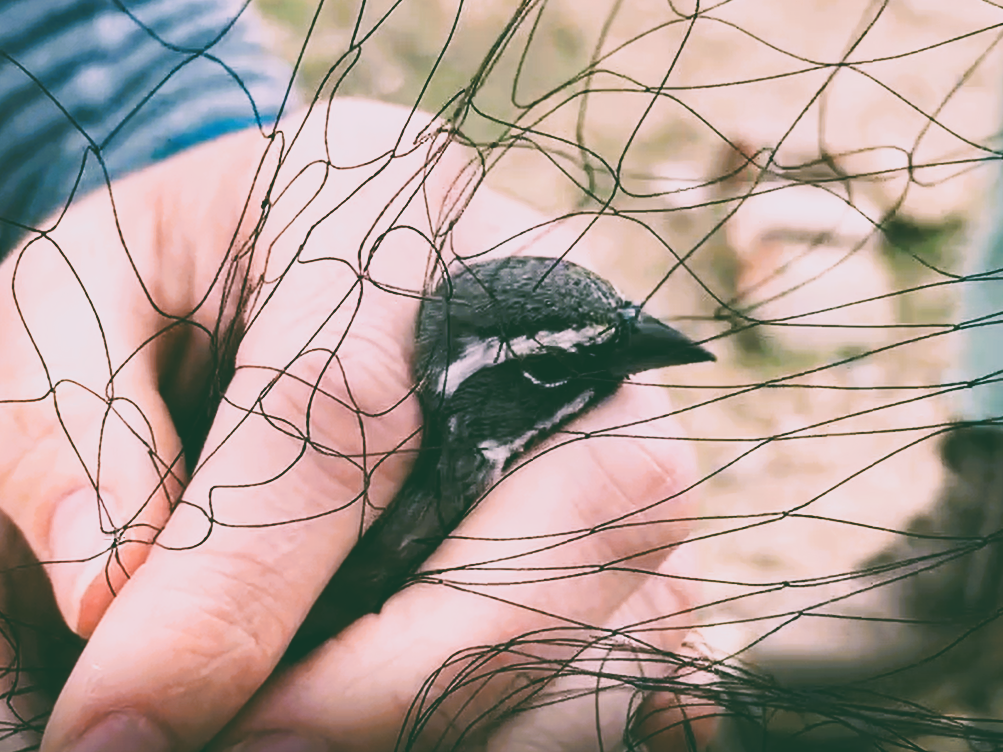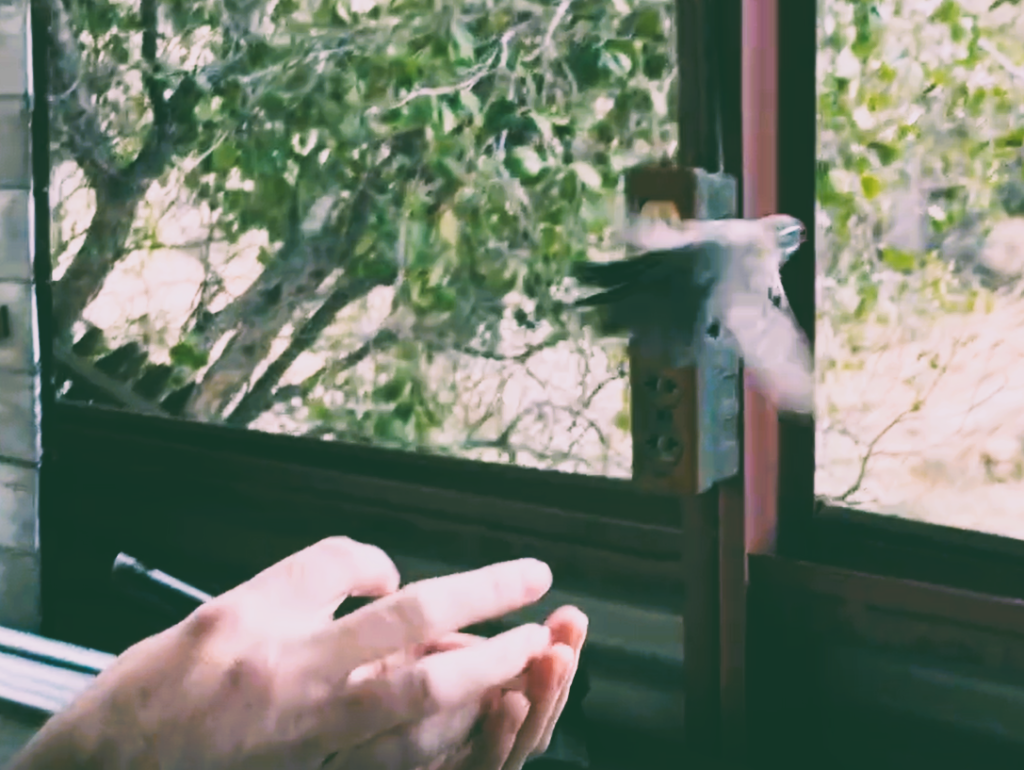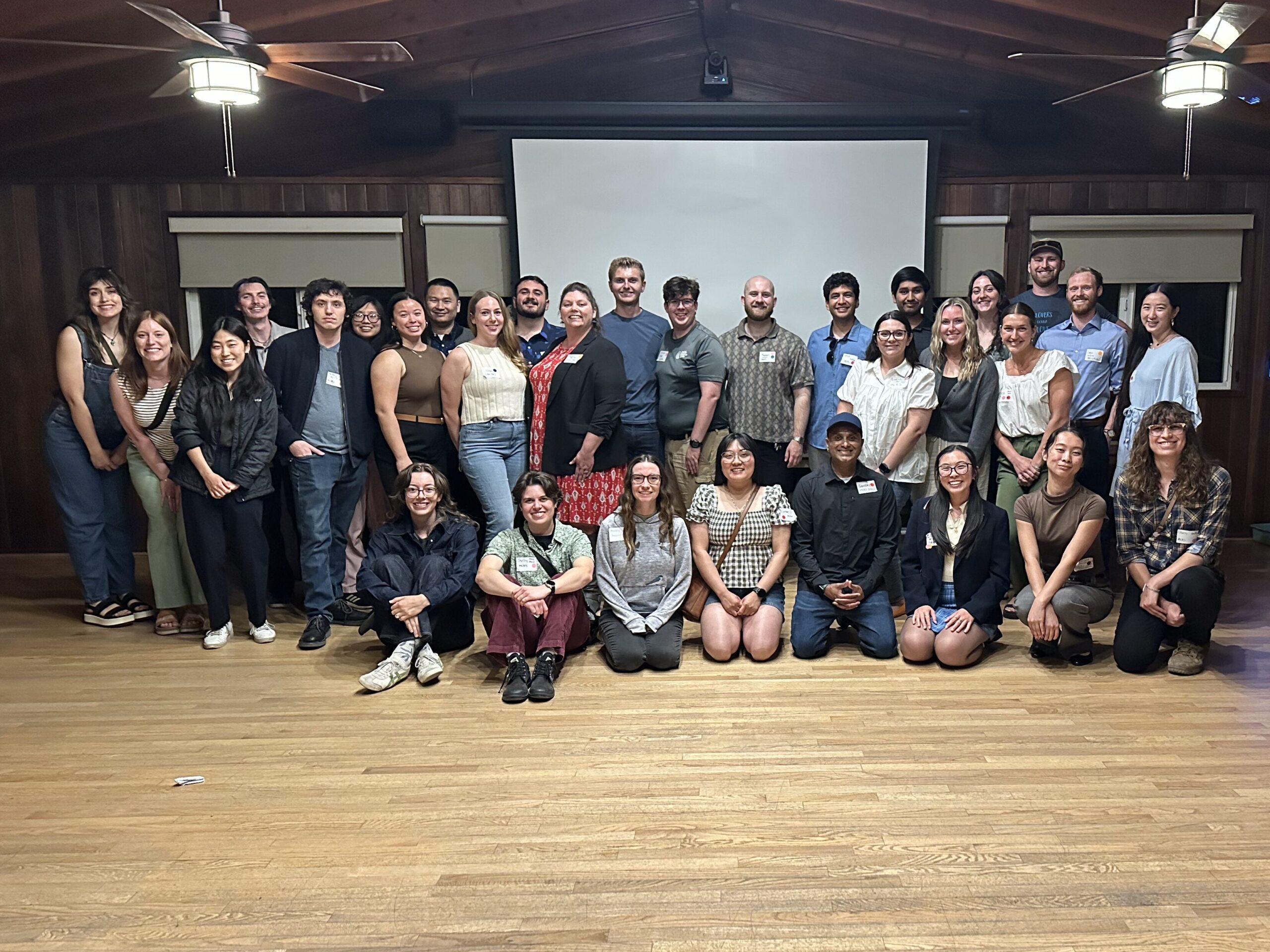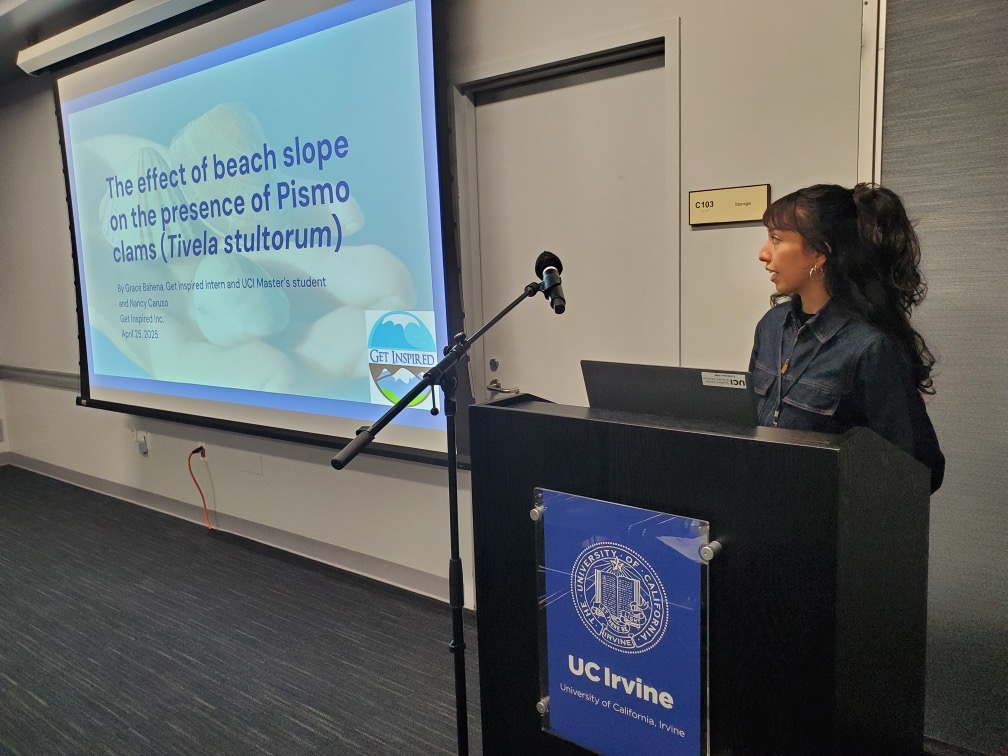Student Blog: Olivia Jenkins
Desert Discord
I’m watching you choke on fresh blood pouring From your perfectly Crafted beak Your itsy bitsy Tiny mouth Made for chickweed, buckwheat, sorrel seeds in the Fall Plucked from the net You are in human hands The large kind Dark cotton ball head Poking out between the knuckles Darker eyes Maroon in the Sun It’s hot and your blood is so bright Dropping to the desert dust I’m squinting I’m choking Up tears and walk away turn my back on your death it’s too sad I can’t watch the scene with the sad scientists and sad sounds I walk back up to the station Wait for the procession Your head is still held between the fingers with your blood already as dry as your home The scientist will stuff you full later with cotton balls he says holding you in one Large hand over the table strewn with books and tools and binders you’re so small I can Barely see you But I see you I see you I see you I see you Back in my home in my kitchen I lean over my pasta stirring It over the stove And something warm runs down my throat I lift the hand not stirring to my face And pull it away with blood running Down my fingers and I see you again and I think maybe we’ll die the same way Why not I don’t think we’re too different My mouth is made for Mac n cheese Instead of tiny little seeds But I don’t think that matters we matter the same

For my final Capstone project, my group members and I are analyzing a 30-year bird banding dataset from the Burns Piñon Ridge Reserve banding station. Located in the Mojave Desert, the station exists to keep track of both migratory and local birds that are present in different seasons, primarily Spring and Fall. Each year, students join a permitted lead bander at the station to participate in the mist netting and banding process. For many students, this is their first time removing a bird from a mist net and performing the tedious banding protocol. More experienced banders assist the beginners and usually, no birds are significantly harmed in the process.
Sometimes, through human error or misfortune, a bird suffers an injury. Sometimes, the injury is fatal. One of these rare fatalities occurred on a recent banding trip and the typically exciting experience was soured. Immediately following the incident, a teammate and I returned to the cabin, arms around each other’s shoulders. As bird lovers and science lovers, we were torn. We know the banding data is important for protecting the larger population of bird species. Still, it was difficult to feel reassured in the greater purpose of the research while mourning the tiny bird.
An extensive study by Spotswood, E. N., et al. (2021) found the rates of mortality and injury at 22 banding organizations in the United States and Canada were very low. The analyses focused on passerines and near-passerines, which make up most of the birds banded at our station. The average rate of injury was 0.59%, while mortality was 0.23% (Spotswood, E.N. et al. 2021). Despite the rarity of injuries, the incident motivated us to reconsider our methods and establish protocols that ensure new banders are trained in proper handling techniques before arriving at the station.
As a scientist, it’s easy to look at the numbers, it’s harder to face the pain of directly harming another creature. Getting stuck in the mist net and being handled by humans is a stressful experience for the birds despite our careful efforts to minimize stress or harm. So, why do I participate in bird banding? Conducting long-term bird banding research in desert habitats is important for understanding how birds and their ecosystems have changed and will change due to climate change.
Banding data helps scientists develop better conservation programs for species that may need extra protection. One of the most effective ways to understand population trends is through direct contact with the bird—through capturing and collecting data about the individual. Over time, the data about each individual bird tells a greater story about their overall population’s health. So, we continue to handle individual birds, knowing that the data is crucial in the long-term.
Both birds and deserts are indicators of bigger changes occurring in the environment (Wu et al. 2018; Iknayan and Beissinger 2018). For example, the ongoing long-term banding program at the Burns Pinon bird banding station can be used to track environmental changes, guide conservation management, and predict future ecological shifts. Understanding bird population trends can therefore help humans better support and design conservation programs for species potentially at risk in the face of climate change.
Through analyzing this massive dataset—a result of decades of effortful days that begin before the desert sun illuminates the Joshua trees—we are bringing a dormant story to life. Carefully and thoroughly analyzing the banding data is my way of honoring the stress endured by each bird we research. The risk of not reading the story, of not collecting the data, is greater than the risk to the few birds affected by the collection. (Still, this does not justify any pain suffered by the birds involved nor resolve my inner discord). Once the data is summarized, I look forward to sharing the story of these desert birds with others. As science communicators, we are responsible for speaking up on behalf of the birds we study. We can use a voice of urgency. We can present data to support their survival. They are more than the scientific study themselves. Each bird banded can unlock new discoveries that can save entire populations and species.

References
Iknayan, Kelly J., and Steven R. Beissinger. 2018. “Collapse of a Desert Bird Community over the Past Century Driven by Climate Change.” Proceedings of the National Academy of Sciences of the United States of America 115(34): 8597–8602.
Spotswood, E. N., Goodman, K. R., Carlisle, J., Cormier, R. L., Humple, D. L., Rousseau, J., Guers, S. L., & Barton, G. G. (2012). How safe is mist netting? evaluating the risk of injury and mortality to birds. Methods in Ecology and Evolution, 3(1), 29–38. https://doi.org/10.1111/j.2041-210x.2011.00123.x
Wu, Joanna X., Chad B. Wilsey, Lotem Taylor, and Gregor W. Schuurman. 2018. “Projected Avifaunal Responses to Climate Change across the U.S. National Park System.” PLoS ONE 13(3): 1–18




